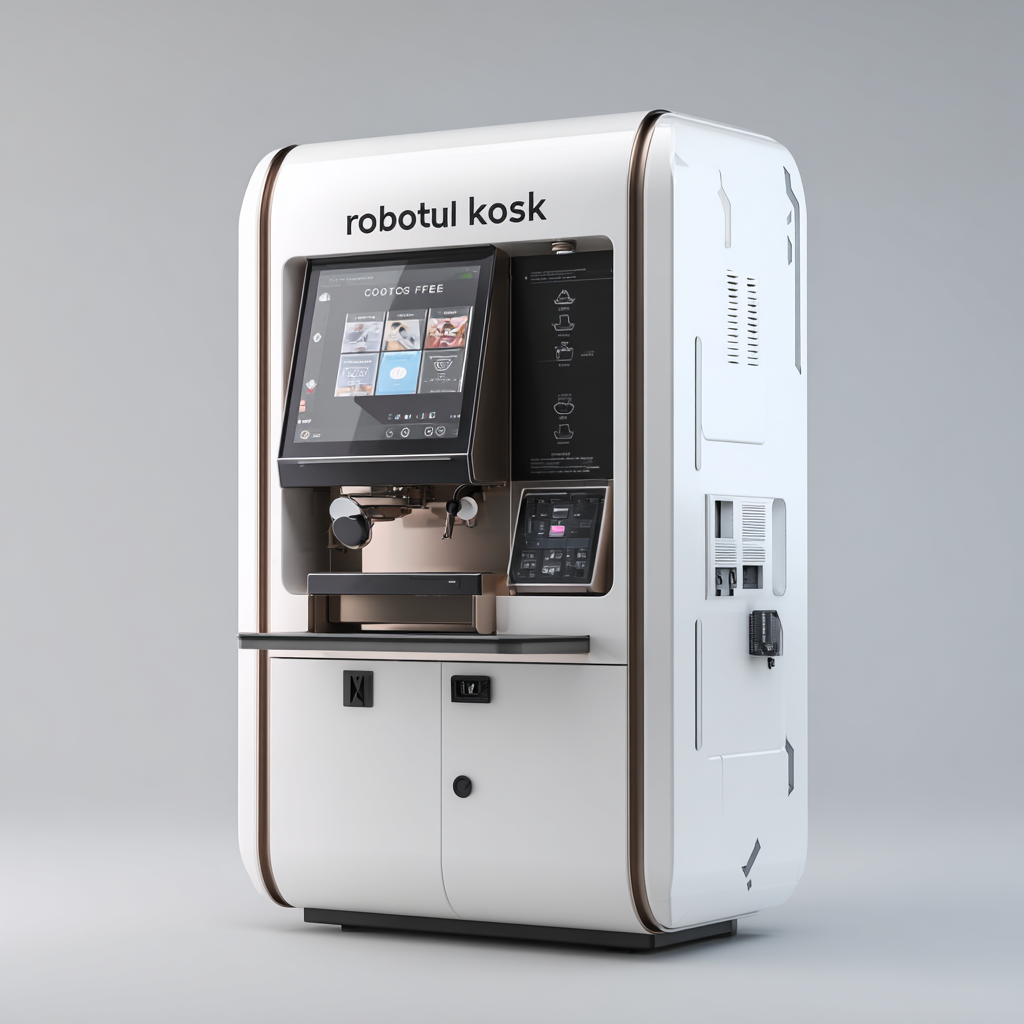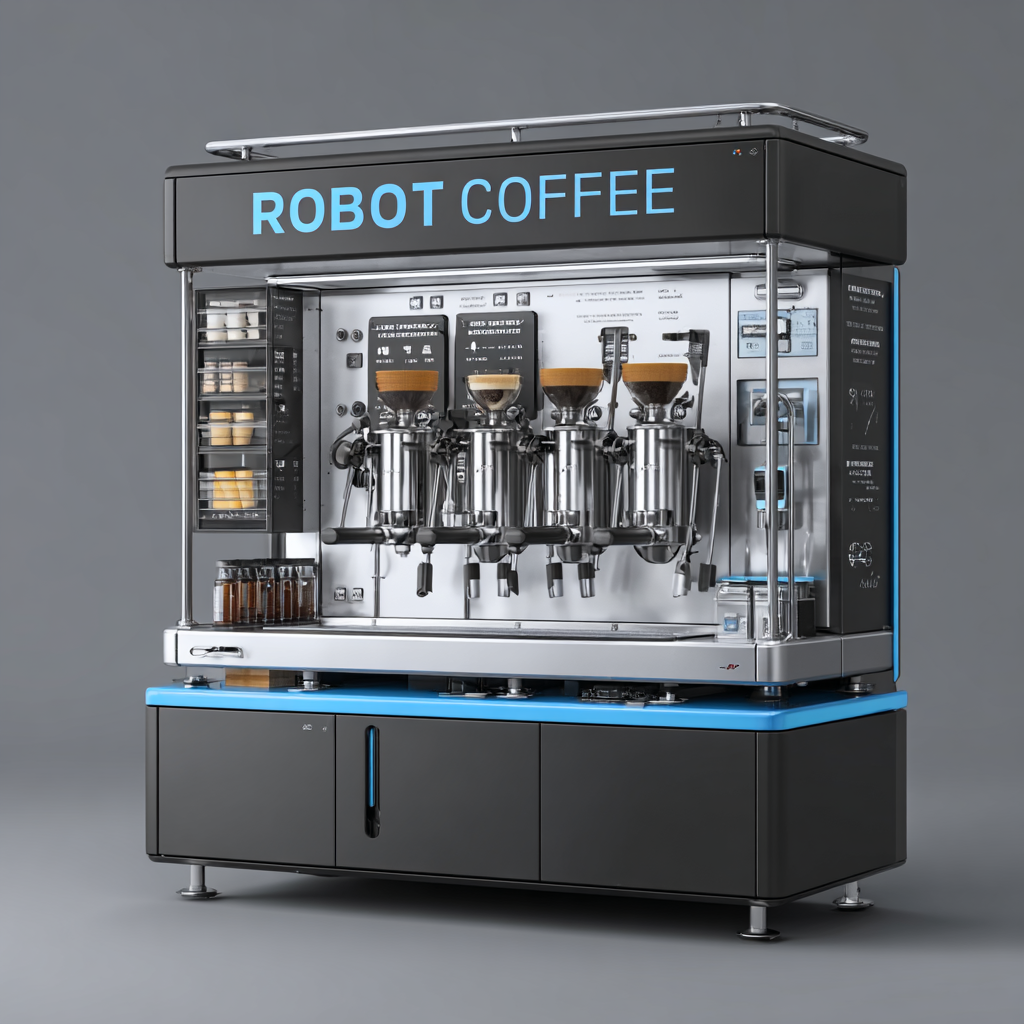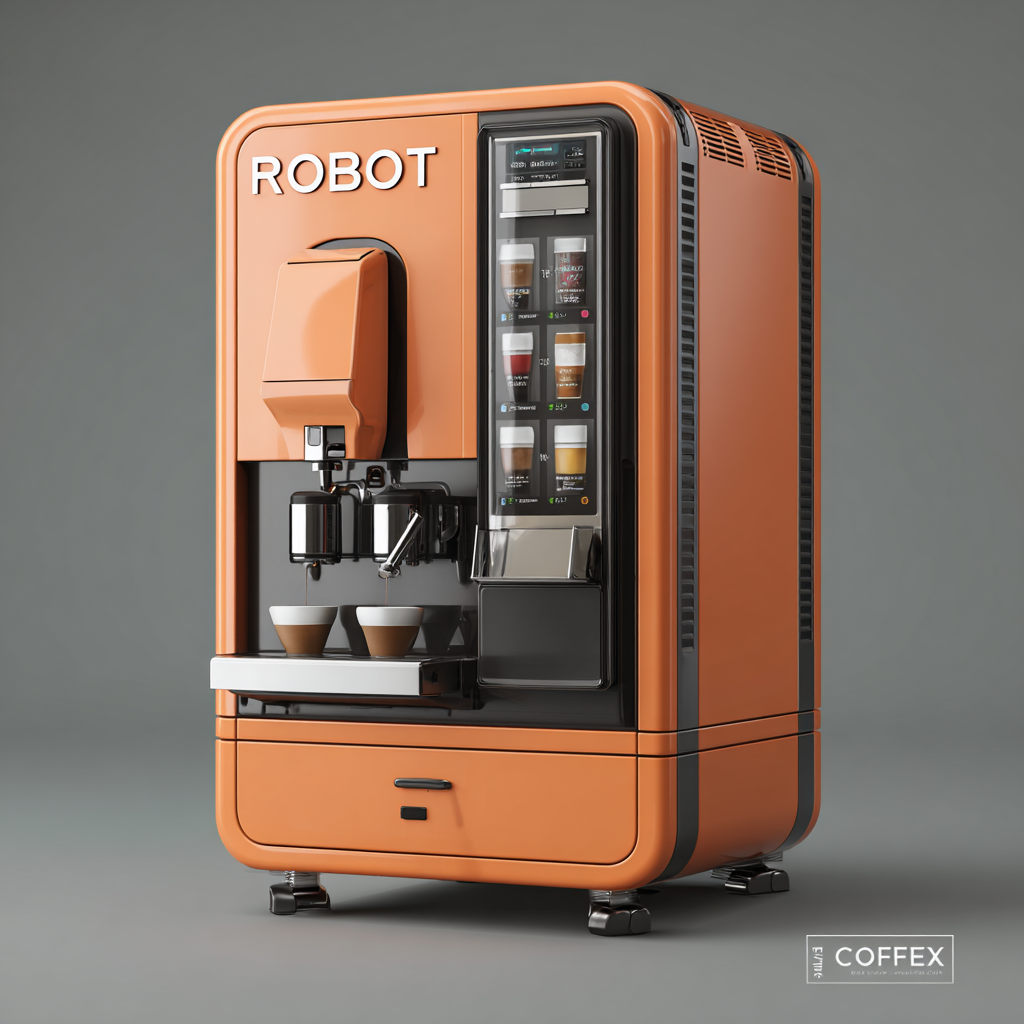Ultimate Showdown of Best Robot Coffee Kiosks for Your Business Success
The rise of automation in the food and beverage industry has paved the way for innovative solutions, with the robot coffee kiosk emerging as a standout player in this transformation. According to a report by Statista, the global coffee market is projected to reach $102.15 billion by 2024, which indicates a robust demand for efficient and high-quality coffee service. Robot coffee kiosks not only meet this demand but also enhance operational efficiency, minimize labor costs, and improve customer satisfaction. As consumer preferences shift towards convenience and quick service, businesses that incorporate these cutting-edge kiosks can gain a competitive edge. This blog will explore the various types of robot coffee kiosks, their unique features, and the specific contexts in which they thrive, ultimately guiding you in selecting the best solution tailored for your business success.

Exploring the Rise of Robot Coffee Kiosks in Modern Business Environments
 The rise of robot coffee kiosks has become a notable trend in modern business environments, revolutionizing how we serve coffee and interact with technology. These automated solutions not only streamline operations but also cater to the ever-evolving preferences of consumers seeking convenience and quality. As businesses lay the groundwork for this new coffee culture, the integration of robotics in beverage service is proving to be a game-changer, enhancing the customer experience while optimizing labor costs.
The rise of robot coffee kiosks has become a notable trend in modern business environments, revolutionizing how we serve coffee and interact with technology. These automated solutions not only streamline operations but also cater to the ever-evolving preferences of consumers seeking convenience and quality. As businesses lay the groundwork for this new coffee culture, the integration of robotics in beverage service is proving to be a game-changer, enhancing the customer experience while optimizing labor costs.
When considering the implementation of a robot coffee kiosk, it’s essential to assess the specific needs of your business. Evaluate factors such as foot traffic, customer preferences, and location to ensure a successful installation. Additionally, investing in quality equipment with user-friendly interfaces can improve customer satisfaction and operational efficiency. Keep your offerings diverse, allowing customization options for beverages, which can attract a broader audience.
Moreover, marketing your robot coffee kiosk effectively is crucial. Use social media platforms to showcase the unique experience your kiosk provides, and offer promotions to encourage initial visits. Engaging with customers through loyalty programs can foster positive relationships and keep them returning for more. By embracing these strategies, businesses can navigate the rise of robotic solutions while ensuring sustained success in a competitive landscape.
Key Features to Look for in the Best Robot Coffee Kiosks
When selecting the best robot coffee kiosks for your business, certain key features are crucial to ensure optimal performance and customer satisfaction. According to a report by MarketsandMarkets, the global robotic coffee kiosk market is expected to grow significantly, reaching a valuation of over $1 billion by 2025. This surge in interest underscores the importance of advanced technology and efficient design in these automated machines.
One of the primary features to consider is the kiosk's ability to customize beverages. Modern robot coffee kiosks often come equipped with user-friendly interfaces, allowing customers to tailor their drinks according to personal preferences. Furthermore, efficiency plays a vital role; the best kiosks can serve customers in under a minute. A study by the National Coffee Association highlights that 79% of consumers appreciate quick service, indicating that speed and convenience are essential for boosting sales and enhancing customer experience.
Another critical aspect is maintenance and reliability. The ideal robot coffee kiosk should feature self-diagnostic capabilities and remote monitoring to minimize downtime. According to a report from IBISWorld, operational efficiency and reduced labor costs are driving more businesses to adopt automation. Ensuring continuous uptime not only increases profitability but also helps in building customer trust and loyalty in a competitive marketplace.
Cost Analysis: Is Investing in a Robot Coffee Kiosk Worth It?
Investing in a robot coffee kiosk can be a strategic move for businesses aiming to enhance customer experience and streamline operations. According to a study by IBISWorld, the coffee shop industry in the U.S. is projected to reach $45.4 billion by 2025, indicating a growing demand for innovative solutions that can help businesses stand out. Robot coffee kiosks not only serve high-quality beverages but also operate with minimal labor, which can significantly reduce operational costs over time. The initial investment might be around $50,000 to $80,000, but when you consider that the labor costs can be reduced by up to 30%, the return on investment (ROI) can be realized within just a couple of years.
Moreover, a report from MarketsandMarkets forecasts that the automated coffee machine market will experience a robust growth rate of 20% annually. This growth is largely driven by technological advancements and a shift in consumer preferences toward convenience and speed. Beyond just the financial benefits, integrating a robot coffee kiosk allows businesses to cater to the increasing trend of contactless service, which has become essential in a post-pandemic market. By assessing these factors, businesses can make an informed decision about whether investing in a robot coffee kiosk aligns with their operational goals and customer expectations.
Customer Experience: How Robot Coffee Kiosks Enhance Service Quality
The rise of robot coffee kiosks is reshaping the customer experience in ways that traditional cafes struggle to match. As the food and beverage industry rapidly embraces automation, robotic baristas are ensuring faster service while maintaining a high level of precision in coffee preparation. This transformation is particularly crucial in an era marked by increasing operational challenges, such as inflation and the phenomenon of "skimpflation", where businesses try to cut back on product quality while retaining prices. By integrating technology, these kiosks effectively enhance service quality, offering a consistent experience that delights customers.

Automation not only streamlines the coffee-making process but also personalizes the interaction. With the capability to track customer preferences, robot coffee kiosks can tailor orders to individual tastes, creating an engaging customer experience. As many specialty coffee operations strive to maintain high-touch service, the challenge lies in balancing technology with a personal touch. Yet, as demonstrated by the integration of AI and robotics in hospitality settings, there is an opportunity to elevate customer engagement without sacrificing quality. This shift towards automated coffee services signifies a new era where efficiency meets bespoke personalization, revolutionizing how consumers experience coffee.
Comparing Leading Brands: Which Robot Coffee Kiosk Reigns Supreme?
In the fast-evolving landscape of coffee retail, robot coffee kiosks have emerged as game-changers, offering efficient service and quality product delivery. Reports indicate that the global coffee kiosk market is projected to grow at a CAGR of 10.1% from 2021 to 2027, underscoring the increasing demand for innovative coffee solutions. With various brands vying for dominance, it’s crucial to analyze which robot coffee kiosk can give your business the competitive edge.
One key factor to consider is the technology behind these kiosks. For example, brands like Cafe X and Robby Coffee utilize advanced robotics and AI algorithms, ensuring not only consistent taste but also quick service. According to a recent survey, 75% of consumers expressed that speed of service is a top priority when purchasing coffee. This trend indicates that investing in a high-performing robot kiosk can significantly enhance customer satisfaction and retention.
**Tips for Selecting the Right Robot Coffee Kiosk:**
1. **Assess Machine Capabilities:** Look for kiosks that offer customizable drink options, allowing you to cater to diverse customer preferences.
2. **Evaluate Maintenance Requirements:** Choose a brand that provides robust support services and easy maintenance to minimize downtime.
3. **Analyze Customer Interaction:** Opt for kiosks with intuitive interfaces; improving user experience can lead to repeat customers and positive word-of-mouth.
